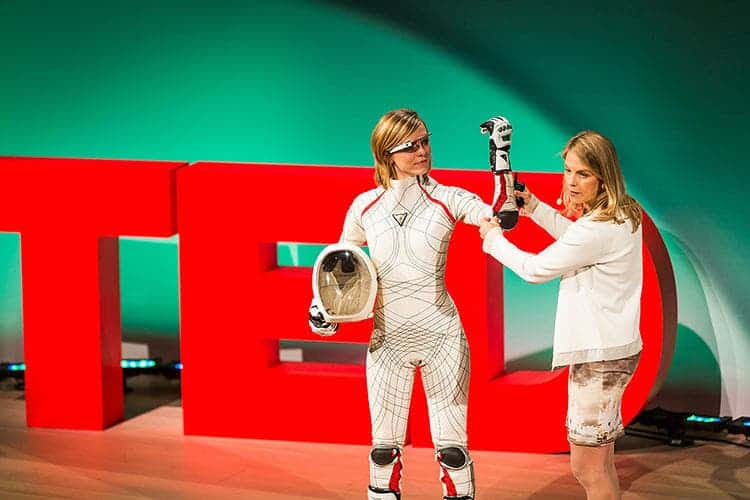The clunky and heavy astronaut costumes used today are very useful and well thought – they provide oxygen, scrub CO2, and keep astronauts safe from radiation and outside negative factors. But they are, still, clunky and heavy, and not really suitable for the kind of intensive exploration astronauts have to conduct on Mars.

Dava Newman, a speaker at this year’s TEDWomen event has worked more than a decade on a better, sleeker and, might I add, sexier costume for Mars exploration. She’s an MIT aerospace engineering professor, whose goal is to ensure astronauts can explore difficult terrain without being bothered in any way by the suit – something almost impossible considering the 150 kg suits currently used.
The invention is so thin because it’s pressurized close to the skin–an advance made possible by tension lines on the suit. Despite the appearances, the suit is really resistant when the astronaut bends his arms or knees. The suit also incorporates active materials, like nickel-titanium shape-memory alloys, which allow the nylon and spandex suit to be shrink-wrapped around the skin even tighter.

Now, Newman finally achieved her goal of obtaining a suit that has 30% of the atmosphere’s pressure – the necessary level to ensure that astronauts can survive in outer space. But the suit has even more going on.
First of all, it’s incredibly resilient. If it somehow gets punctured, an astronaut can simply heal it on the spot, using a special type of bandage. That’s not possible with today’s suits.
“With a gas-pressurized shell, it’s game over with a puncture,” Newman explains.

Furthermore, this suit has more applications, outside of space exploration. For example, it could be used to increase athletic performance (read about this here) and help boost mobility for people with cerebral palsy.
“We’ll probably send a dozen or so people to Mars in my lifetime. I hope I see it,” she says. “But imagine if we could help kids with CP just move around a little bit better.”
She still doesn’t have proper funding, and she didn’t want to discuss any potential partnerships with NASA (who would be the obvious choice here). She did mention that if her plans check out, then the new suit will not only be better, but also cheaper to make what’s available today.






